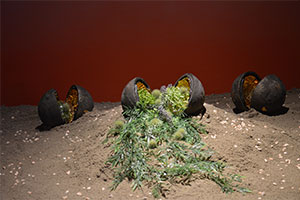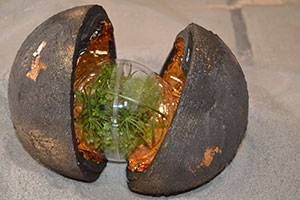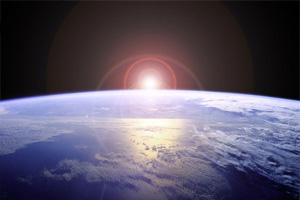EarthSeeds - Humanity's Ultimate Purpose in the Evolution of Life
The Technical Issues
The technologies for seeding the cosmos can be narrowed down to three basic scenarios. The first and most obvious is the human colonization of near space. The second scenario entails robotic seeding missions, i.e. seed carrying spacecraft launched from Earth. The last scenario proposes using comets to carry EarthSeeds to outer reaches of our galaxy.
From the human perspective space colonization is definitely the most attractive, apparently pragmatic and most romantic idea. Besides the reasons mentioned earlier about the lack of enthusiasm for utilizing space resources to promote the survival of life on Earth to make the case for using space resources to promote life off Earth may sound like a paradox. However, there are other considerations. The main consideration is the expense and difficulty of establishing a viable self-supporting human colony anywhere beyond Earth, even within our own solar system. Also, the cosmic impact of this method as an appropriate approach to "seeding" would be minuscule and subject to many of the same influences that currently affect the future of humanity on its home planet.
Robotic missions offer the most immediate approach. There are robots moving around on the surface of Mars photographing its surroundings and delivering remarkable images and other information from the surface of the planet. It could as well be boring holes and planting EarthSeeds if this was practical. Another robot is surveying Mars from orbit and mapping its features. Earlier robots, Voyager 1 and 2 are on their way out of the solar system with plaques on board explaining the location and type of life from the planet they left behind.
Recent missions to Mars such as ESA’s Exomars, NASA’s MAVEN – Mars Atmosphere and Volatile Evolution and India’s Mars Orbiter Mission are designed to search for signs of life. The likelihood that they will discover life on the red planet is actually very small. In the vastness of the cosmos, the chances that the Voyager or similar untargeted spacecraft will ever encounter another place as conducive for life as the place that sent are also extremely remote. Using our powerful astronomical technologies to identify relatively near cosmic locations that exhibit what we believe to be conditions for life is not beyond imagination. SETI – the Search for Extraterrestrial Intelligence has been active for many years. Maybe SETI will one day make detect another civilization elsewhere.
Michael Mautner has suggested that it would be possible to initiate a program to design a type of low cost solar sail spacecraft that could be produced in large quantities so that cost per spacecraft would be in the $10,000 range (1000 = $10,000,000) (Mautner, 1995). Thousands of these could be deployed with robotic seeding systems to likely destinations within several light years from Earth. As an example of the benefits of mass production, the German V-2 rocket was mass-produced by the thousands at a cost of $13,000 per vehicle (Walker, 1993). Concepts for ultra-light solar sail missions are today under study as well as other forms of interstellar propulsion using microwaves, lasers, or a combination of fission and fusion using anti-matter as a catalyst (David, 1997).
What could be a more appropriate payload on such missions than EarthSeeds from Earth? Such a program of directed panspermia, or as Mautner more appropriately calls "directed panbiota", would have to be very coordinated and concentrated. Robotic spacecraft sent on interstellar missions could contain more advanced forms of the genetically engineered biological materials - even one or multi-celled organisms which could maybe jump-start the evolutionary processes by billions of years.
A third scenario is to implant bacterial and viral matter on the surfaces of comets and use these space voyagers to take EarthSeeds to other places. We have demonstrated our ability to rendezvous spacecraft with a comet and this technique can surely be improved. The initial quantities of microbes could be small - the process of replication would initiate when the comet eventually encounters the right environmental conditions. Of course, it is difficult at the moment to accurately predict the appearance, origins and destinations of comets so the chances of success would probably be very small.
Other important elements in this discussion of the technological issues are the recent advances in both computer and genetic engineering. There is no need to describe the former as its developments and breakthroughs are being reported almost daily in the media. Genetically engineering microbiotic organisms to be extremely adaptive to a wide range of environments would be an essential aspect of directed panbiotic missions. One truly significant and related development is the explosion of Internet as a global communication and marketing environment as well as a shared global consciousness.
- Michael N. Mautner, Directed Panspermia. 2. Technological Advances Toward Seeding Other Solar Systems and the Foundation of Panbiotic Ethics. Journal of the BIS, Vol. 48, pp. 435-440.
- Michael N. Mautner, Society for Life in Space (SOLIS)
www.panspermia-society.com - 2000, Michael N. Mautner, Seeding the Universe with Life: Securing Our Cosmological Future
- 1997, Leonard David, Report: Propulsion Key to Interstellar Exploration, Space News, Vol. 8 No. 34, pp. 17




